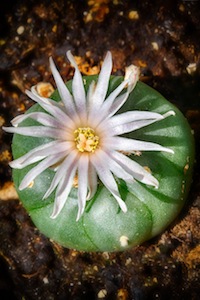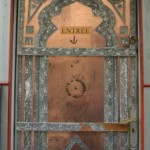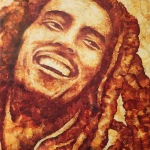A Good Way to Teach
If you’ve read Returning to Sacred World you probably recall a number of references to and quotes from Kanucas, a spiritual elder in the Native American Church (NAC). Kanucas was my first contact with the NAC in 2003 and in the years since I’ve had a lot of interaction with him.
Returning to Sacred World makes frequent mention of teachings from the NAC and includes a full chapter on the ceremonies and the sacred peyote medicine. When I had the manuscript pretty much ready to go, I sent him a copy, telling myself that if he objected I would not seek publication. Fortunately there was nothing in the book Kanucas found objectionable or inaccurate. Instead, he spoke in very positive terms about the content and the writing.
When the book was published in November 2010 I organized a book launch event here in Vancouver BC and asked Kanucas if he would come and speak at it. He agreed without hesitation. A week before the event I called to make sure we were on track and reached him far from home in California, where he and his wife Anne had been called down to work for several weeks. He said he intended to take a break from the job and come up for the launch. That in itself got me, but it gets much more dramatic.
About four days before the launch I got a call from Anne informing me that Kanucas had had a car accident on the way up from California. He was driving at night in northern California with his daughter and grandchild in the pickup truck when they hit some black ice. The truck slid into a raised curb, rolled over one and a half times and came to a stop upside down in a ditch. Remarkably, all three emerged without significant injuries. Kanucas got the worst of it with a cracked and displaced collarbone and a collection of bumps, cuts, and bruises. The truck was a write-off.
Anne told me that the chances of Kanucas making it back to his home on the Olympic peninsula in Washington state were slim, let alone getting up to Vancouver for the book launch. To my surprise though she added that he still hoped to make it and that I should check back in a couple of days.
On Thursday, two days before the event, I called and reached Kanucas. Anne had picked him up in another car and driven him home, a journey of nearly a thousand miles. She then turned right around and headed back down to California to continue working. Kanucas told me he was sore and carless and though it didn’t look likely, he had not given up on the possibility of honoring his promise.
On Friday he called me and announced that his friend Gord had offered to drive him to the U.S./Canada border, a five or six hour trip. Like many of the Native Americans I know, Gord didn’t have a passport to get into Canada so we agreed that I would wait and watch for Kanucas just across the border on the Canadian side. Kanucas has difficulty walking any distance at the best of times, let alone after being bounced around the cab of his truck like that. After a lengthy grilling from a grumpy and bewildered Customs agent, Gord was allowed—under the doubting gaze of a couple of officers—to drive through the border for another fifty metres or so and drop him off where I was waiting.
I add this level of detail because of my suspicion—based on past experiences—that when a positive intention has been set into play unexpected support often manifests from unseen sources. Kanucas in particular seems to have spirit guides and guardians close at hand much of the time.
Sitting in my kitchen the next morning, Kanucas showed me where his collarbone had been pushed far enough out of alignment that I could see it jutting out behind the shoulder joint. He could barely move his left arm. His right forearm was wrapped in a large bandage and his discomfort was obvious.
About forty people showed up for the launch. Kanucas spoke about the ideas in my book for about twenty minutes and added his own understanding of some of the underpinning principles. Most if not all of those present were moved by his obvious authenticity and wisdom, even more so when I took the mic and explained what he had endured to get there. I suggested a hat-passing for the “help Kanucas get a new vehicle” fund and the folks there generously chipped in with about $200. Most of those present also bought a copy of the book, no doubt due at least in part to Kanucas’ testimonials on my behalf.
I was deeply moved and more than impressed by Kanucas’ generosity of spirit and the discipline of his commitment to honor a promise despite obstacles that would deter most of us. It felt like a great gift at the time, but it turned out to have unexpected reverberations.
Now, a year later, I can see that what Kanucas handed to me that weekend wasn’t just a generous gift. It was also a powerful teaching and a transmission of responsibility. I doubt he saw it that way though. He just does things like that for people. But it got under my skin and influenced my behavior.
We all know there’s much talk on this planet that doesn’t hold up. We have lots of old homilies and clichés on that theme: “Put your money where your mouth is,” Walk the talk,” “Actions speak louder than words,” “All hat, no cattle,” and so on. Kanucas’ selfless actions on my behalf put the golden seal of approval on the teachings he has accumulated and shared for so many years.
What I see now as I look back over these past months is that, without any conscious agenda, I’ve found myself more frequently saying an unhesitating yes to requests for support or assistance and jumping in wholeheartedly to situations that could benefit from my attention. It feels fine, you know, you just do it, no big deal, no litter left behind on the path.
My old Buddhist mentor Chögyam Trungpa—also referenced frequently in Returning to Sacred World—used to talk about choicelessness. That may sound restrictive, as though you’re not free to make your own choices. You are of course. But maybe there’s an energy coming from a certain direction, a “first thought best thought” intuition. You feel your way along, you don’t have to endlessly analyze things and hem and haw about the right course of action. Life can be a lot simpler lived that way.
I’m not trying to make this whole situation and the changes it wrought in me sound like some grand accomplishment on my part. Many people help each other in similar ways. Some live every day in service. This one was a somewhat extreme example of sacrificing personal comfort and convenience to help a friend, and as I’ve suggested, it set a high standard of behavior for me that without conscious planning I have since felt honor-bound to live up to.




Leave a Reply
Want to join the discussion?Feel free to contribute!